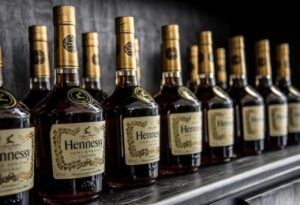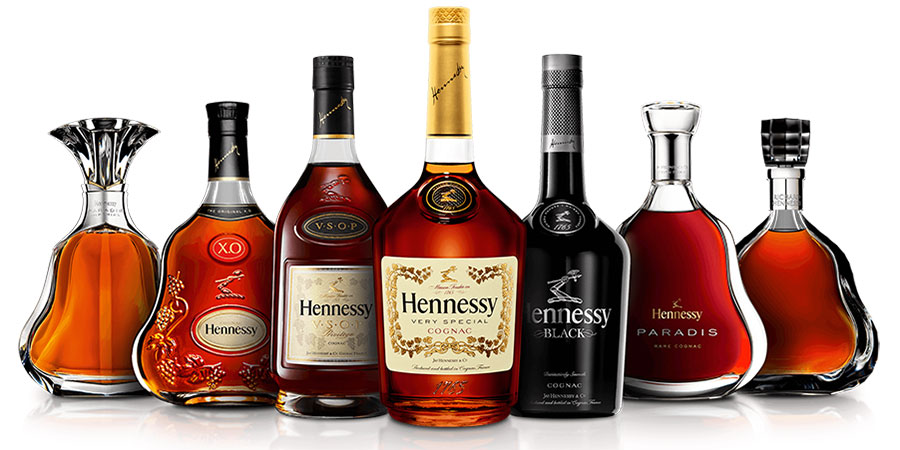RECENT NEWS
Hennessy Whisky
Hennessy Whisky: History
Hennessy whisky is one of the most premium cognacs in the world with about 50 million bottles sold yearly, making Jas Hennessy & Co. the world’s largest producer of cognac.![]()
The drink is a major feature in nightlife, and hugely popular in Hip Hop culture with rap artist, Nas at the forefront of its campaigns.
From the V.S, V.S.O.P to the X.O and every other brand of Hennessy, there is a unique taste that satisfies the cognac lover, but ever wondered what the Hennessy Whisky story is all about?

History of Hennessy Cognac
Located in the Cognac region of France, the Hennessy cognac distillery was founded by Irishman Richard Hennessy in 1765, an Irish officer serving in the army of Louis XV.
Hennessy bottle
Following a record of productive growth in France and surrounding European countries, Hennessy was first imported to America in 1794, nearly 30 years after it was born.
The exportation to America signaled the birth of the cognac as an international that is celebrated to this day. That international recognition was first registered by The Prince of Wales, later King George IV of Great Britain. Being a great connoisseur of cognac, the King asked Hennessy in 1817 to create a “very superior old pale cognac” – and the Hennessy V.S.O.P was created. The initials V.S.O.P – Very Superior Old Pale – have been used since then as a standard for the entire cognac industry.
A year later, Empress Maria Federovna of Russia asked Maison Hennessy to produce his cognac as a birthday present for her son Czar Alexander, and that was how Hennessy found its way to cold Russia.
Having assumed the status of a global brand, the need came up for Hennessy Whisky to have a widely recognized logo. The Cognac house deiced to go for an iconic fist clutching a hatchet as its official symbol in 1856. The symbol was used in memory of its founder Richard Hennessy’s 12-year career with the French army.
In 1865, Maurice Hennessy, great-grandson of founder Richard Hennessy, began to classify the brand based on stars. His use of varying numbers of stars to designate different qualities, led to Hennessy’s Three Star Cognac, today is known as V.S (Very Special). As with the V.S.O.P, this was copied by other brands in the industry.![]()
Hennessy Whisky marked a significant feat in history when, in 1949, bottles of Hennessy 3-Star cognacs were packed as part of Paul-Emilie Victor’s luggage as he set out on his expedition to the Arctic. Right to say then that, Hennessy Whisky has journeyed from Cognac to the end of the world.
In the 1970s, Kilian Hennessy Whisky assumed office as the CEO of Hennessy and initiated the company’s 1971 merger withMoët et Chandon, which created Moët Hennessy. Moet Hennesy merged with Louis Vuitton in 1987, and the Louis Vuitton Moët-Hennessy or LVMH was created – the world’s biggest, luxury brand company.
What is Hennessy made from?
Like every other cognac, Hennessy is made from grapes grown in the Charante region of France. With its chalky, stony soil and sunny temperate climate, the region is perfect for vine growing.
For Hennessy Whisky, the cru is made up mostly of Ugni Blanc grapes, which have prevailed as the dominant grape in the Cognac region. Only the eau-de-vie from the first four crus is used due to its fruity, light white wine ideal for distillation.
The grapes are pressed to get the juice which is left to ferment for two or three weeks using modern fermentation processes, usually in October. Yeast is added to the juice, which helps convert the sugar in the juice into alcohol of about 7% to 8%.
The fermented juice is then distilled through a time-tested method that uses traditionally shaped Charentais copper stills, also known as an alembic. Two distillations must be carried out; the resulting eau-de-vie is a colorless spirit of about 70% alcohol.
The distillation process is done twice for the wine to qualify as a cognac – usually, the resulting eau-de-vie is a white “water-of-life” spirit with 70% alcohol.
Once the distillation is done, the wine is then stored in casks made from the nearby Limousin or Tronçais forest. The wood is perfect for aging cognacs due to their low resin content.
As the cognac interacts with the cask and air, it loses both alcohol and water – more alcohol than water such that it reduces to 40%. The Cognac is then transferred to glass carboys called bonbons for storage before it is blended.
Throughout the aging period, the casks are sampled regularly by lowering a glass vial called a “prouvette” into an opening on the cask, according to a plan laid out by the Master Blender. The aging process sometimes lasts for centuries.
The blending of the cognac, or marriage, as it is otherwise called is necessary to achieve the unique taste peculiar to Hennessy Whisky. The Master Blender oversees the blending process to ensure that the mark of quality and taste remains consistent and true to the Hennessy standard.
The age of the cognac is calculated as that of the youngest component used in the blend. The blend is usually of different ages and from different local areas.
Once the blended cognac is ready, it is then bottled and your Hennessy cognac is ready. Hennessy was one of the first spirits brands to deliver its offerings in bottles.
Hennessy Cognac Range
Hennessy cognac comes in the following products according to the aging and blending processes:
- Hennessy Black
- Hennessy White
- Hennessy V.S
- Privilége V.S.O.P
- Fine de Cognac
- Hennessy X.O
- Deutschland Moet Hennessy
- Pure White
- Private Reserve
- Hennessy Paradis
- Hennessy Diptyque
- Richard Hennessy
- Timeless (2000 units produced)
- Ellipse (2000 units produced)
- Beauté du Siècle (100 units produced, in chest)
- Hennessy VVVV (1860)
- Hennessy No.1
- Hennessy Silver Jubilee (1977)
- Hennessy First Landing 1868
- Hennessy Prive (Travel Retail Exclusive)
- Hennessy Library
- James Hennessy
-
Strawberry hennessy

